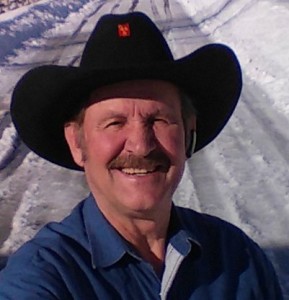There are those who advocate the elimination of elk feedgrounds, including the National Elk Refuge. I call that ideology foolishly impractical. I challenged them to submit their plan. In response, they delivered a research paper to me entitled “What Happens When Elk Feeding Ends”.
In this treatise their main claim is that since many other places throughout the west have viable elk herds without artificial feeding, then northwest Wyoming can do the same. This is not a valid argument or comparison for the following reasons; 1) Our harsh winters are much worse than any other elk area. 2) No area referenced has a tourist town with thousands of ski vacationers occupying the only low-elevation valley available for wintering.
My first winter in Jackson Hole, ’83-84, the temperature on Christmas Eve was 38 below zero with deep snow covering the fence posts. Those conditions were really hard on wildlife and livestock. How tough was that winter? We ran out of hay and couldn’t afford to buy more, so my horses were eating pictures of hay that I cut out of old farm supply magazines. I found several pictures of grain and old Dollar really enjoyed it, although he ate so much he ’bout foundered. On New Year’s Eve he escaped from the corral and had a wild night of drunken debauchery at the Cowboy Bar on the town square in downtown Jackson. He enjoyed sitting on the saddle barstools and flirting with the barmaids. In fact, one of those barmaids wrote a song about it entitled “Sandpaper Kisses”. He got his picture taken under the antler arch with a pretty cowgirl. Old Dollar returned home with a gigantic hangover. But I digress. Back to my subject.
Consistent temperatures of 30 below will kill elk unless they have a full belly of nutritious vittles, which on the Refuge consists of hay pellets. The lowest temperature ever recorded in Jackson was -63 degrees and the record snowfall for a winter was 155 inches in town. That will kill a lot of elk. Wyoming winter has the potential of doing it again.
The advocates of eliminating elk feeding claim we have “1.74 million acres” of winter habitat in northwest Wyoming which can support the existing herd of elk without supplemental feed. I’m sorry, but most of that area is not suitable as winter habitat for elk. They claim “in Jackson Hole 20,000 acres are under conservation easement for protection of wildlife habitats”. Well, I happen to know a great deal about that kind of land, because that is exactly what my ranch is; a conservation easement consisting of 256 acres west of the airport. The ranch pastures are absolutely uninhabitable for elk in the winter, with deep and drifting snow and bitter blizzard-force winds. An elk cannot survive here but these folks think that is “available winter habitat” for elk just because it is a “conservation easement”.
Those who do not learn by the lessons of history are doomed to repeat it. In the winter of 1889-90 “it was reported as many as 20,000 elk died” of winter starvation in Jackson Hole. In the winter of 1909 another huge winter-kill occurred. “The elk invaded ranches, haystacks and the not yet incorporated town of Jackson. They roamed through the streets and residents’ yards. They died everywhere. One resident noted in the spring of 1909 that it was possible to walk at least two miles stepping on elk carcasses without ever putting a foot on the ground.” From National Elk Refuge: 1912-2012 by Shannon Sullivan. Mind you, at that time there were few fences and few hunters between Davey Jackson’s Hole and an alleged migration route to wintering grounds on the Red Desert. I personally don’t believe the majority of elk traditionally migrated out of “the Hole”. If they migrated, then why so many elk in the valley in the killer winters of 1889 and 1909? Cowboy common sense says few migrated.
After the three hard winters of 1909-1911, legislation was promulgated to set up the National Elk Refuge to keep these elk from starving to death. The Wyoming Game and Fish Department established other feedgrounds in outlying areas.
Elk habitually drift downward in the fall, to the lowest elevation available. That’s where our homes and businesses are—on the valley floor. Without feedgrounds, the elk will be in our yards and on our roads. Fencing is an expensive and cruel way of protecting haystacks and landscape vegetation. The elk will be right on your doorstep as you watch them starve to death, unable to save them. There is no other place for them to go. A harsh winter in the near future is a definite possibility. Is the very real prospect of mass starvation a risk worth taking? This cowboy with a bit of common sense guarantees that we won’t like the results of meddling with a system that has worked for a hundred years to protect our iconic elk herds.
Remember, “Life is always better when viewed from between the ears of a horse.”
Jonesy

